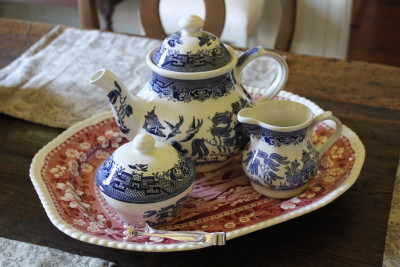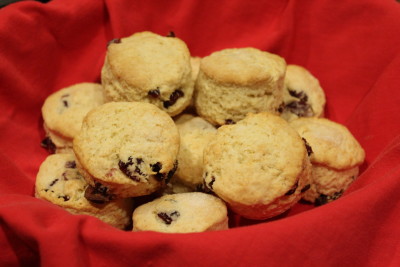
Scones are quintessential British tea. You can skip the sandwiches and cakes, but scones are a must!
Scones can be butter scones or cream scones; plain or with nuts and/or dried fruit. I like to make smaller round scones, about two inches in diameter, but they often are made in a larger size such as 2 1/2 or 3 inches. They often come in triangle shapes, which are easy to do if you pat the dough out into a circle, and then cut wedges. I like to use a fluted cutter, but I haven’t been able to find it lately.
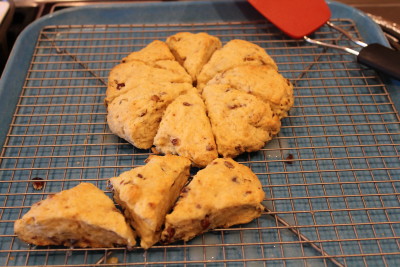
Cream scones are made with a light or heavy cream, which contains butter fat. Butter scones contain butter as well as milk. Either work just fine. My favorite recipe uses a cream scone batter mixed with dried mixed fruit that has been soaked in Cointreau for 15 to 20 minutes. The orange flavor really punches up the flavor.
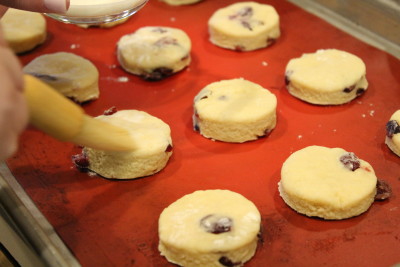
Once the scones have been placed on the baking sheet, they normally get a glaze. The recipe may call for an egg wash, cream wash or cream wash sprinkled with sugar.
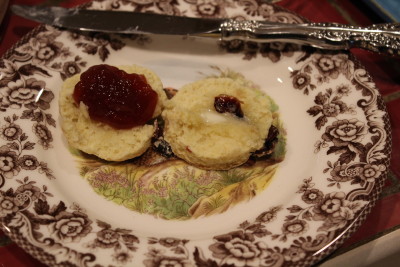
To serve scones, I think the most common way to serve them is with clotted cream and strawberry jam. Devonshire cream, whipped cream or even butter will work along with your favorite jam. I had a rose petal jam at tea in London that was amazing, but I digress! I think butter and honey would be amazing as well, but just writing that may get me booted from the Anglophile Society.
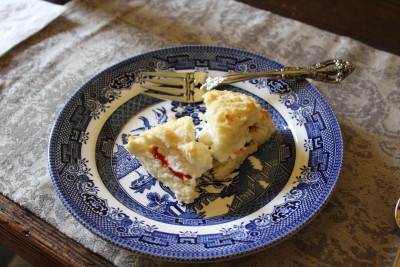
Scones should be served warm, but let me tell you that they will be just as readily eaten on the second day…if they last that long!
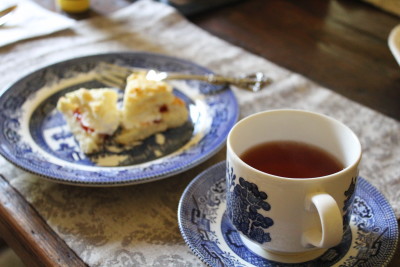
The scones in these photos were made using a cream scone recipe mixed with dried sweetened cranberries that had been soaked in Cointreau. I had thought about adding almonds, but I only had whole almonds in the house. They were delightful just as they were.
If you can make a biscuit, you can make a scone. And if you make scones, you might as well put the kettle on for some tea. While you are at it, invite me and a few friends over!
